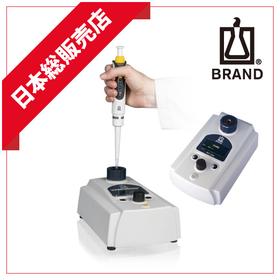Phosphate-based and iodine-based ionic liquids
Ionic liquids are expected to have applications in a wide range of fields. At Kanto Chemical, we offer a variety of products!
Ionic liquids possess characteristics such as "low volatility and flammability," "high ionic conductivity," "high thermal stability," and "excellent electrochemical properties," and are expected to be materials in a wide range of fields, including next-generation environmental and energy-related areas. 【Features】 ■ Phosphonate-based ionic liquids These are phosphonate-based ionic liquids that are actively researched by Hiroyuki Ohno and others at Tokyo University of Agriculture and Technology. They are composed of phosphonic acid derivatives as anions, which are known to dissolve cellulose under mild conditions. ■ Iodine-based ionic liquids These are ionic liquids with iodide as the anion. They are compounds that have been studied in fields such as dye-sensitized solar cells, but some products have shown discoloration due to iodine. This product is a high-purity ionic liquid with minimized coloration. Kanto Chemical offers a variety of ionic liquids beyond those mentioned above. For more details, please download the catalog or feel free to contact us.
basic information
Ionic liquids are "salts" composed solely of ions (anions and cations), and specifically, liquid compounds are referred to as ionic liquids. Generally, "salts" made up of ions are represented by inorganic salts, which are known to have high melting points. However, since the early 1990s, low-melting "ionic liquids" have been reported, and various compounds have been synthesized with their physical properties documented. There is no particularly clear definition, and the names used to refer to them vary, including terms like "room temperature molten salts" and "ambient temperature molten salts." Cations are classified based on their basic skeletal structure into "imidazolium salts," "pyrrolidinium salts," "pyridinium salts," "piperidinium salts," "ammonium salts," and "phosphonium salts." By changing the alkyl groups of the side chains or the types of anions, it is possible to design physical properties such as melting points, viscosity, and ionic conductivity.
Price range
Delivery Time
Applications/Examples of results
For more details, please download the catalog or feel free to contact us.
Line up(17)
| Model number | overview |
|---|---|
| 14670-35 | 1-Ethyl-3-methylimidazolium methylphosphonate 25 mL |
| 14670-25 | 1-Ethyl-3-methylimidazolium methylphosphonate 100 mL |
| 32520-35 | 1-Propyl-3-methylimidazolium iodide 25 mL |
| 32520-25 | 1-Propyl-3-methylimidazolium iodide 100 mL |
| 04235-35 | 1-Butyl-3-methylimidazolium iodide 25 mL |
| 04235-25 | 1-Butyl-3-methylimidazolium iodide 100 mL |
| 18010-35 | 1-Hexyl-3-methylimidazolium iodide 25 mL |
| 01119-35 | 1-Allyl-3-ethylimidazolium iodide 25 mL |
| 01119-25 | 1-Allyl-3-ethylimidazolium iodide 100 mL |
| 10506-35 | 1,3-Dimethylimidazolium iodide 25 g |
| 10506-25 | 1,3-Dimethylimidazolium iodide 100 g |
| 11507-35 | 1,2-Dimethyl-3-propylimidazolium iodide 25 g |
| 11507-25 | 1,2-Dimethyl-3-propylimidazolium iodide 100 g |
| 01120-35 | 1-Allyl-3-methylimidazolium iodide 25 g |
| 01120-25 | 1-Allyl-3-methylimidazolium iodide 100 g |
| 14669-35 | 1-Ethyl-3-methylimidazolium iodide 25 g |
| 14669-25 | 1-Ethyl-3-methylimidazolium iodide 100 g |
catalog(2)
Download All CatalogsRecommended products
Distributors
Since its establishment in 1944, Kanto Chemical has continued to develop competitive products in four fields: reagents, electronic materials, clinical diagnostic reagents, and chemical products, under a strict quality control system as a comprehensive reagent manufacturer.













































